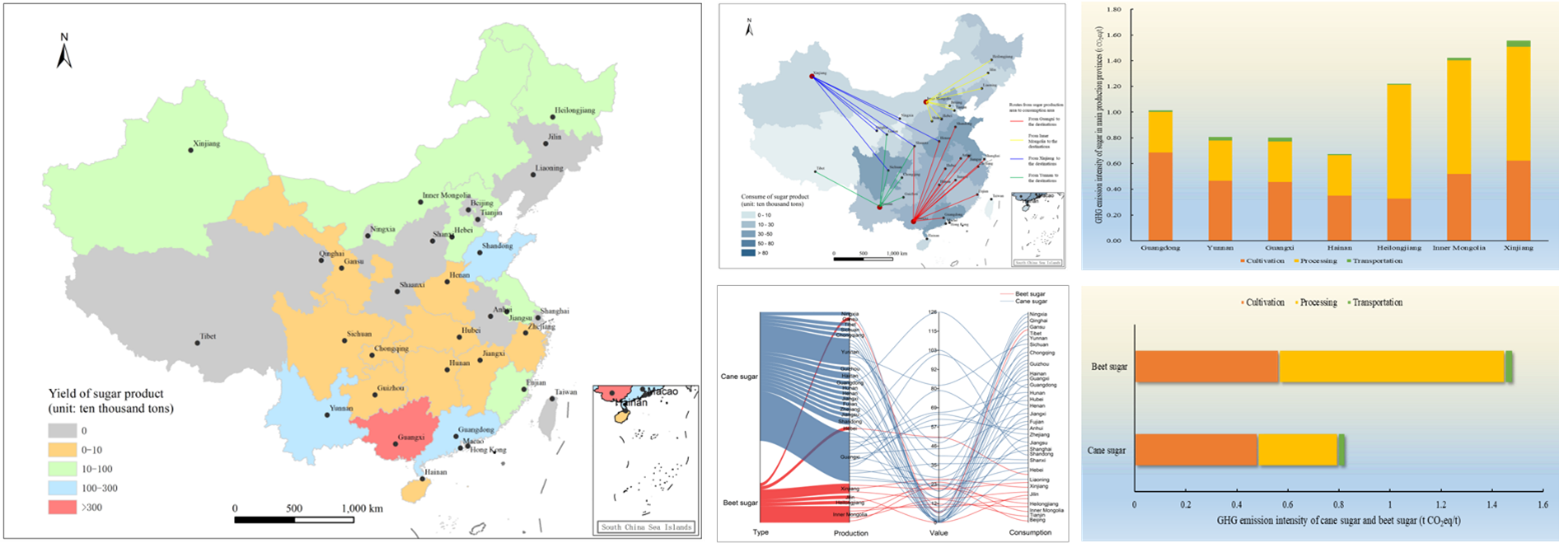Recently, the Smart Meteorology and Utilization of Agro-climate Resources Team from the Institute of Environment and Sustainable Development in Agriculture, Chinese Academy of Agricultural Sciences revealed the spatiotemporal evolution trends and future scenarios of greenhouse gas (GHG) emissions from sugar production in China. The team further explored measures for reducing GHG emissions from sugar crops cultivation and sugar production. The related findings have been published in the Sustainable Production and Consumption .
This study analyzed the evolution process and structure characteristics of the carbon footprint throughout the chain of the sugar industry (including sugarcane and sugarbeet planting, processing, storage, transportation, waste disposal, etc.) over the past 20 years by using the life cycle assessment (LCA) method, and predicted the trends of carbon emissions from China's sugar industry in 2030 and 2060.

The study revealed that the average carbon emissions per unit yield of sugar showed a downward trend from 2004 to 2021, but the total carbon emissions from sugar production had not yet reached its peak due to the growth of consumption demand; on the other hand, the average carbon emissions per unit of beet sugar were far higher than that of cane sugar, and with the implementation of the Carbon Peaking and Carbon Neutrality strategy, the carbon emissions from sugar production would decline 15%-87% by 2030 and 2060. The findings provide a scientific basis for the adjustment to the planting structure of sugarcane and sugarbeet as well as the green and low-carbon transition of the sugar industry in China.
This research was financially supported by CAAS Center for Science in Agricultural Green and Low Carbon, among others.
Linkage: https://doi.org/10.1016/j.spc.2024.03.010

